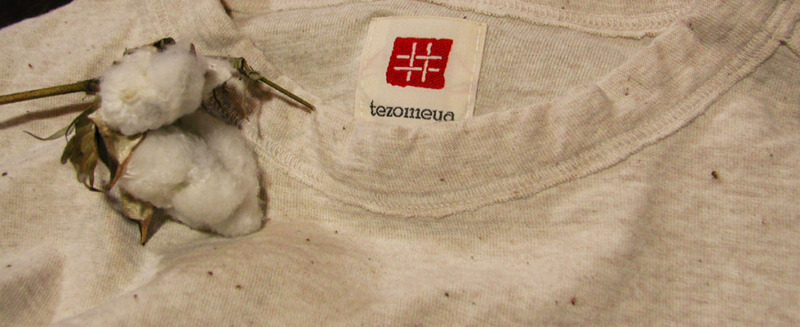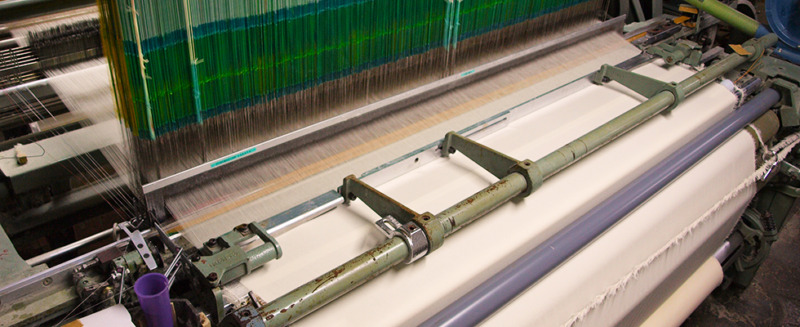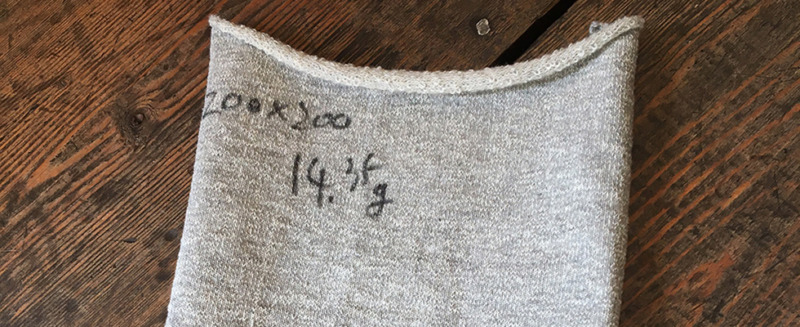tezomeya Blog
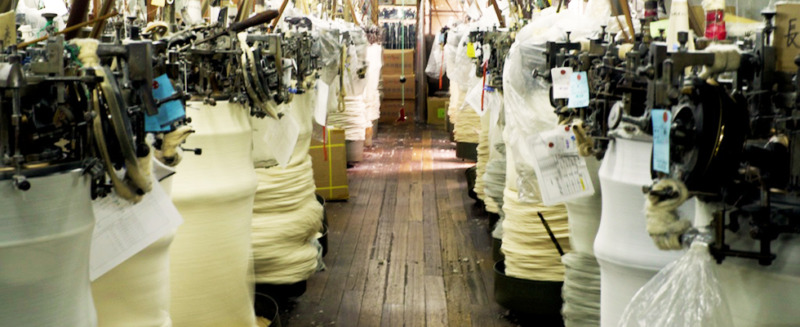
Loop-wheeled knit, Kanekichi
Prologue ~ How to Read “Huge and Small”
Why is it bamboo shoot?
The meaning of “huge and small” Kotoba, as it is “feeling like being big buckwheat or small”. I wonder why such a kotoba was made to be a hypothesis, it seems that the knit at the time was really big or small.
I think that you understand the wool sweater as you imagine, but if you pull a knit item a bit, it will stretch considerably both vertically and horizontally. It is knit that the fabric size changes with a little external force. Of course, its stretchability is the biggest feature of knit, but if it changes too much easily it is extremely difficult to cut and sew.
If it is a modern technology, you can make clothes with the unstable knitted fabrics set to the specified size by making use of heat set and various processing, with the width and length being tightly stabilized just like the textile fabric However, there is no such technology in the early Showa era. It was a knitted tubular fabric, making clothing as it was, with the width and length of the fabric in random order.
So I think that the knit clothes were very hard at that time. And this kanji called huge and small was given to such a loose knitted fabric. Every time I see this letter, I always feel compassion and reverence that the textile industry at the time was having a hard time.
And, it was the knitting machine of the “hanging” which I will explain from the future that I made a big success in the era when I was making the “huge and small” knitted fabric. That’s right, I can make a random fabric.
“No, no, like that!”
Haha, that’s right. However, it becomes a wonderful fabric in usage, high.
This hanging knitting machine, already already half a century after replacing the modern sinker circular knitting machine, a factory which has made great machinery while maintaining this machine even now, knitting our wonderful knit It is Mr. Kanekichi Industry of Wakayama which is doing.
Let me explain about this wonderfully loved “hanging knitting machine” and Kanekichi industrial from here.
What is a hanging (knitting) knitting machine?
As I mentioned earlier, the hanging knitting machine is a knitting machine that has been active all the while from the Meiji era when the knit product came out industrially to around the 1950s era. After that, because the speed of knitting was slow and production efficiency did not rise, the subsequent new machines stepped up more and more.
And now a handful of craftsmen who know how to use this machine as well. Since all parts have been discontinued in the Showa era, we can not make new machines. It is a state that old machine is adjusted, taking necessary parts from machines for taking out old parts, repair and maintenance.
Kanekichi Kogyo who keeps using more than 200 modern machines before that is precious. It is a wonderful factory. Why are you still treating such old and slow machines?
It is not from a fluffy image that said “old is good”, “slow is good”. It is not merely a nostalgic idea.
Yes, there are fabrics that can not be done without this hanging knitting machine!
We will introduce the points unique to that hairstyle machine along with images.
1. Because it is hung “hanging” knitting machine
A hanging knitting machine is attached to a beam of a tree of a factory with a steel column. It is only fixed with this iron pillar.
Yes, a hung knitting machine from ‘hanging’ on the beam of a tree. I do not know in the picture, but the bottom floats from the ground.
About 80 cm in diameter with this machine. It is compact. It can be replaced by unscrewing the joint part with the upper beam.
About 90 units can be installed in the factory, but about 110 waiting stitches waiting for the next turn on the back yard are waiting.
2. Compared to current state-of-the-art high-speed sinker circular knitting machine
This is the latest high speed sinker circular knitting machine. The thread is descending to the knitting part of the bottom breadthlessly from the top.
About 40 to 60 ordinal threads are descending at a time, and it is knitted at once. A round cylinder like the lower drum turns round and gets steadily.
So, when the drum goes round, the fabric will be finished with only the thickness of 40 to 60 threads.
Precise control of tension of this yarn and feeding amount etc This is a wonderful knitting machine with this.
3. Supply of the hoisting knitting machine is only two yarns
Here is the yarn feeding part of the hanging knitting machine. There are two cone-like threads on the right side of the image. These are the only two yarns.
Depending on the setting, it seems that you can set up to 4, but even if the round cylinder below goes round one after all, the suspension knitting machine can only knit the length for the thickness of 1 to 4 threads.
This is why the work of the hoist knitting machine is slow (the rotation is not slow).
I am stuck to the knitted fabric, but it seems to take two to three days to knit one.
4. There is no tension on the thread when the knitted fabric is being made at the belly part
An image in which a thread is sent to a navel. Peeling boards attached to the belly buttons and threads riding on the turning body attached to the main body (which is said to be called a beard needle) will overlap at the navel and the woven eyes will be made. I do not know in the picture ….
There is little tension applied to the thread in this knitting process.
n the modern mainstream sinker circular knitting machine etc., the needle moves up and down and pulls the yarn to make a loop to form a stitch, but since the hanger knitting machine does not apply force to the thread, the feeling of the thread is plump It is finished in a knitted fabric without being lost.
5. I will knit a thread by hooking it one by one needle
I asked you to stop the machine.
A thread is caught on one side of a sideways needle (beard needle). This is the yarn put on the front lap with a lap. From now on again invading the navel and crossing the next thread every single thread on this needle will also become a stitch. At that time the thread will not be pulled any further.
The modern knitting machine is completely different in structure from this needle, it hooks the hook on the keyed part of the upward needle, it moves up and down and hooks the next thread again to make the knitted fabric. That is, the knitted fabric is formed in a state where the yarn is strongly pulled.
Whether you add or not apply force to the thread during the knitting process will greatly affect the texture of the fabric afterwards.
This structural structure is totally different between the hanger knitting machine and the present machine.
6. Suspension knitting machine does not apply any tension to knitted cloth
Overall picture of the hoist knitting machine. The knitted fabric will accumulate steadily under its own weight.
Although there is no image, the modern knitting machine will take up beautifully.
This is because winding is easier to handle later, but you have to pull the fabric to wind up.
Yes, hanging knitting machine does not apply any tension to knitted fabric </ strong>.
It is a little hard to fold or pack the dough knitting fabrics that you accumulate underneath. However, instead of having to struggle, it finishes with the fabric relaxed.
That is, hanging knitting machine is a machine that knits slowly and slowly without putting unnecessary load on yarn and fabric. </ strong>
7. It is the eyesight of craftworkers who adjusts the beard needle perfectly horizontally at equal intervals
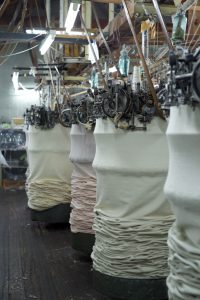 I read this as “Knitting”. If you know, is it those who stayed in the apparel industry for a long time?
I read this as “Knitting”. If you know, is it those who stayed in the apparel industry for a long time?
